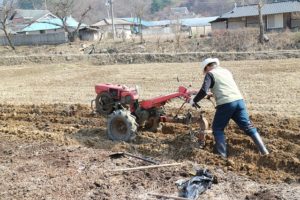The secret to growing healthy fruits and vegetables at home is providing them with great nutrients. Plants depend upon the quality of the soil for proper nourishment that can be passed on to the consumers. Every year when you grow plants, they degrade the soil unless your garden is ecologically balanced. Here we are going to show you things that your soil needs to have so that it can provide the best kind of support to your plants, let dig into it!
Why Soil Health Assessment?
 Your soil quality plays a very important role on your crop health and production. However, very few people actually conduct a soil test before they start farming and sometimes they are left wondering why the plants do not grow the way they would like them to.
Your soil quality plays a very important role on your crop health and production. However, very few people actually conduct a soil test before they start farming and sometimes they are left wondering why the plants do not grow the way they would like them to.
If you’re a farmer, many of the components of your farming and your decisions for future planning will depend on soil testing. So it is very important that you invest time into making sure that your soil has the appropriate elements so it may assist your plants to not just grow, but thrive!
Soil health assessment is measuring how healthy your soil is for growing healthy crops. A health assessment of your soil will help you determine the performance of your crops and how well the nutrients will be preserved in the future.
5 Easy Soil Tests:
Below is a simple, easy to follow system for assessing your soil quality developed by a team of farmers and soil scientists in Oregon.
1. Soil Structure:
Determine the structure of your soil by digging a 6-10 inch hole, when the soil isn’t too dry or wet. This will help you determine whether the soil is cloddy, powder like, or granular. “Ideally, your soil should be made up of different sized crumbs that will hold their shape under slight pressure.” – Says organic life. If the crumbs are too difficult to break, your soil is probably too hard.
2. Compaction:
You can determine the compaction level of your soil by plunging in flags vertically into the soil at different locations. Observe the depth at which the wires bend. Ideally, you should be able to go more than a foot deep. If you can’t go more than a foot, your soil is probably too compact.
3. Workability:
 How was your experience with your garden last time you worked with it? If you worked on your garden last season, tilling or digging should be easier. Farmers judge the workability of their soil by determining how much energy is needed for preparing the soil. It may be helpful to keep some sort of record that allows you to remember and keep track of how the soil is performing as time passes.
How was your experience with your garden last time you worked with it? If you worked on your garden last season, tilling or digging should be easier. Farmers judge the workability of their soil by determining how much energy is needed for preparing the soil. It may be helpful to keep some sort of record that allows you to remember and keep track of how the soil is performing as time passes.
4. Organisms:
Dig down into your soil and determine the animal life in your soil. Dig down at least 6 inches and peer down into the hole for 4 minutes to see signs of living organisms in your soil. If you see signs of insects, bugs, ground beetles, rabbits, deer, squirrels and spiders, make sure to prepare accordingly. Also, some organisms like earthworms are good for your soil. Make sure you have enough diversity of life in your soil and learn about which kinds of organisms are beneficial to your plants and which ones are not.
5. Plant Residue:
Dig down 6 inches and then look for plant matter, especially if you’ve grown a cover crop, usually 1 month after turning it into the soil. The range of organic material is important to notice here.
Conclusion:
 Your soil quality determines how well your plants will grow. If you are just starting out a new farm or want to start a garden in your backyard or front yard, it’s necessary that you check your soil quality and plan accordingly. Soil testing is vital for the success of any farmer, which very few people do. Be one of the few that puts in the work and a consequently gets amazing results!
Your soil quality determines how well your plants will grow. If you are just starting out a new farm or want to start a garden in your backyard or front yard, it’s necessary that you check your soil quality and plan accordingly. Soil testing is vital for the success of any farmer, which very few people do. Be one of the few that puts in the work and a consequently gets amazing results!
P.S: To learn more please join our EAT community for hours of lessons and tons of information for FREE!
Source: Institute of Ecolonomics
Related Articles and Resources:
- join our EAT community
- 5 Green Spring Vegetables You Should be Eating
- Facts about Organic Food that You Didn’t Know
- 5 Home Gardening Tips for the Spring – Start Early!



